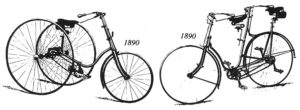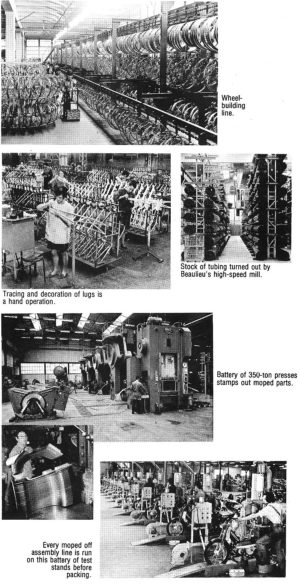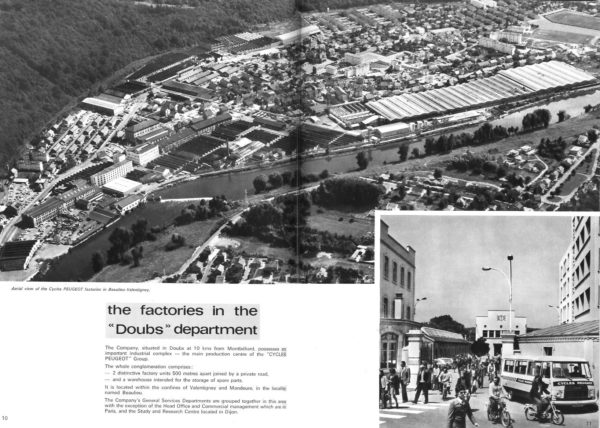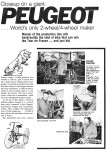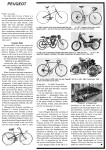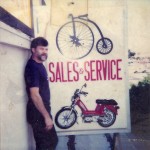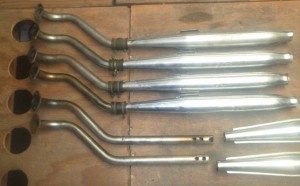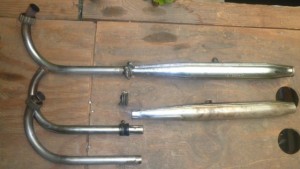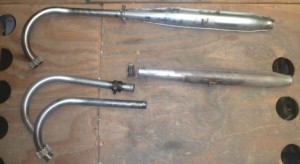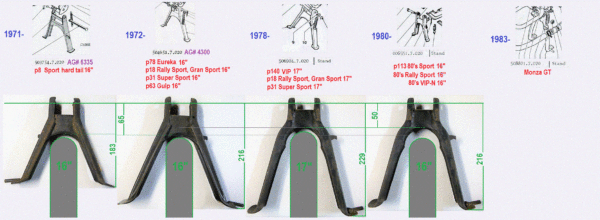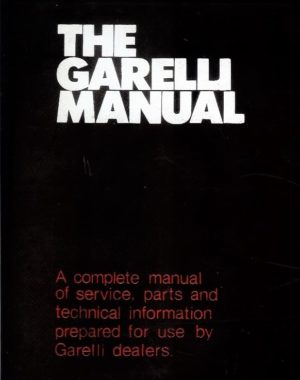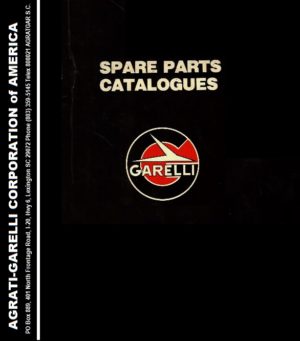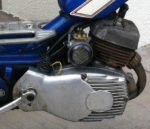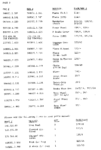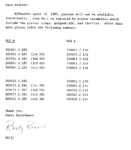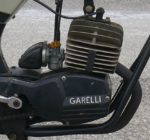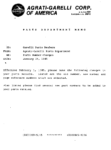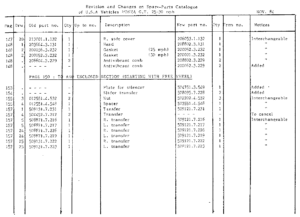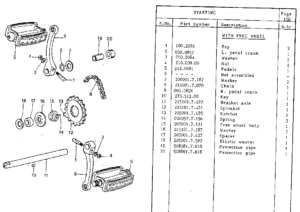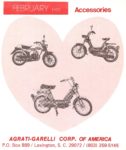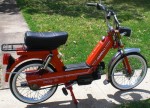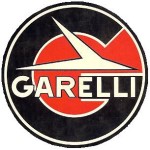 Contents:
Contents:
# yrs spds cc Horizontal Cylinder Engines
1. 50’s 1-0 38 307
1. 50’s 1-0 49 311, 38-B, 38-B auto
2. 60’s 1-0 35 387
3. 70’s 1-2 49 H1-radial, H1, H1-late, H2
4. 80’s 1-0 49 H1-late, H1-a1, H1-a2, H1-a3, H1-a4
5. 80’s 2-0 49 H2-black, H2-late, H2-a2, H2-a4k
# yrs spds cc Vertical Cylinder Engines
6. 50’s 3-4 49 315H, 315HS, 315M2
6. 50’s 3-4 70 319, 319E, 319RB
7. 60’s 1-0 49 341P, 351P, 351nP
8. 60’s 2-0 49 357P?, 357cP, 357sP, 357gP
9. 60’s 3-0 49 353P, 353K, 353ERKY, 353cERKY
9. 60’s 3-0 49 353bEKY, 353cEKY
10. 60’s 4-0 49 354K, 354KR, 354KZ, 354RZKY, 354nZKW
10. 60’s 4-0 49 354mBZKW, 354nBZKW, 354pZKW
10. 60’s 4-0 94 374bEKW, 374cRKY, 374gRKY, 374hRKY
11. 70’s 1-2 49 G1, G2, G2k
12. 70’s 3-0 49 G3m, G3mk
13. 70’s 4-5 49 G4mk, G4akr, G4ak, G4ak2, G4akp
13. 70’s 4-5 49 G5ak, G5akp, G58k
14. 80’s 1-0 49 V1, M1-radial, M1
15. 80’s 2-3 49 V2, V2N, V3, V3k
16. 80’s 4-5 49 V4k, V5ak2, M5ak

1960’s Engine Model Name Meanings:
35 is 49cc, 37 is 94cc engine size
1, 7, 3, 4 are 1, 2, 3, 4 trans. speeds
b, c, h, m, n, p are model identifiers
P is pedal-start, K is kick-start
Y is hand-shift, W is foot-shift
E is export (special power), B is ?
R is fan cooled, Z is increased power
Unofficial Model Names: In 1970 Garelli stopped using engine model names. Instead they spelled out the engine models, like “vertical cylinder two speed automatic”. So these ’70’s and ’80’s engine model names are made up. They are green to distinguish them from official names.
Horizontal Cylinder Engines
1950’s: After WWII much of Europe was damaged. Because gas stations and roads were scarce, Garelli shifted their focus to 50cc lightweight mopeds. In the early 50’s Garelli only made Mosquito horizontal-cylinder friction-drive bicycle engines. They were sold as kits and on bikes. In the late 50’s Garelli also made Mosquito vertical-cylinder chain-drive moped engines. They were only sold on bikes.
1. 1950’s 1-speed Horizontal Cylinder
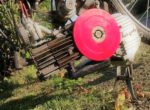
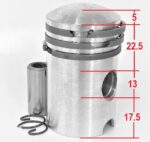
1947-51 307 Mosquito 38 kit 38cc 0.8hp
piston GOL 0058.A 5+22.5+13+17.5=58
rings three 35 x 2.5 GN, pin 13 x 26


1951-55 311 (38-B) Bici Mosquito 49cc 1.0hp
piston GOL 0058.B 6+22.5+14+17=59.5
rings three 40 x 2.0 GN, pin 14 x 32


1953-60 38-B Mosquito 38-B kit 49cc 1.0hp
1955-70 38-B auto Mosquito 511 49cc 1.2 hp
piston GOL 0058.B 6+22.5+14+17=59.5
rings three 40 x 2.0 GN, pin 14 x 32
2. 1960’s 1-speed Horizontal Cylinder

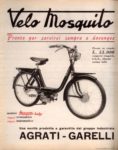
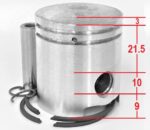
1966-68 387 Velo Mosquito 35cc alum. cylinder
1968-72 387 Mosquito Baby kit
piston GOL 0058.C 3+21.5+10+9=43.5
rings two 38 x 1.5 GN, pin 10 x 31.5
3. 1970’s 1 or 2-speed Horizontal Cylinder
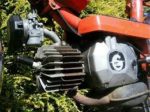
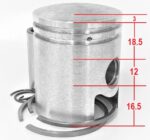
 1971-76 H1 with radial fins
1971-76 H1 with radial fins
piston GOL 0037 3+18.5+12+16.5=50
rings two 40 x 2.0 GN, pin 12 x 33
on 71-76 Garelli Katia
on 71?76 Garelli Katia (UK)
on 72-76 Garelli Eureka
on 72-76 Garelli Eureka Flex
on 72?76 Garelli Eureka (UK)
on 75-76 Garelli Eureka Flex (US)
This 50cc one speed automatic moped engine began on the 1971 Katia. US models began on the 1975 Eureka. This ’71-76 version is solid-mounted to the frame, with no rubber bushings to dampen vibration.
iron cylinder 205.051.3111 20-25 mph
iron cylinder 205.001.3111 30 mph
left cover 205002.1131 silver faceted
right cover 205001.1132 silver faceted
F200001-F201240 = 1,240


 1976-78 H1 with 6 side fins
1976-78 H1 with 6 side fins
piston GOL 0037 3+18.5+12+16.5=50
rings two 40 x 2.0 GN, pin 12 x 33
Cylinder and head changed from radial fin iron to 6-fin iron type. The new and old types interchange. Cases and case gasket changed from solid mount to rubber mount type.
iron cylinder 205.060.3111 20-25-30 mph
left cover 205002.1131 silver faceted
right cover 205001.1132 silver faceted
F201241-F271810 = 70,570


 1978-80 H1 with 6 side fins, late covers
1978-80 H1 with 6 side fins, late covers
piston GOL 0037 3+18.5+12+16.5=50
rings two 40 x 2.0 GN, pin 12 x 33
Side covers changed from silver faceted to black with lines type. The new and old types interchange.
iron cylinder 205.060.3111 20 mph, 25 mph up to F275010
iron cylinder 205.003.3111 30 mph, 25 mph from F275011
left cover 205013.1131 black with lines
right cover 205013.1132 black with lines
intake pipe 205001.3321 rounded
F271811-F337644 = 65,834


 1978-79 H2 with 6 side fins
1978-79 H2 with 6 side fins
piston GOL 0037 3+18.5+12+16.5=50
rings two 40 x 2.0 GN, pin 12 x 33
This two-speed engine looks the same as a one-speed.
iron cylinder 205.003.3111 25 mph
left cover 205002.1131 silver faceted
right cover 205001.1132 silver faceted
H038472-H040000? = 1,528?
4. 1980’s 1-speed Horizontal Cylinder
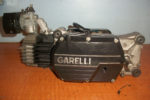

 1981-83 H1 with 6 side fins, late covers
1981-83 H1 with 6 side fins, late covers
piston GOL 0037 3+18.5+12+16.5=50
rings two 40 x 2.0 GN, pin 12 x 33
Intake pipe changed from rounded to straight.
intake pipe 205002.3321 square
F337645-F342161? = 4,517?


 1980 H1-a1 with 12 side fins
1980 H1-a1 with 12 side fins
piston GOL 0534 0+18.8+12+16.7=47.5
rings two 40 x 2.0 GN, pin 12 x 33
Cylinder and head changed from 6-fin iron to 12-fin aluminum.
alum. cylinder 205.054.3111 20 mph
alum. cylinder 205.002.3111 25-30 mph
left cover 205013.1131 black with lines
right cover 205013.1132 black with lines
F342162-F344000? = 1,839?
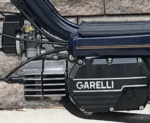

 1980-85 H1-a2 with 5 side fins
1980-85 H1-a2 with 5 side fins
piston GOL 0534 0+18.8+12+16.7=47.5
rings two 40 x 2.0 GN, pin 12 x 33
Cylinder and head changed from 12-fin aluminum to 5-fin aluminum.
alum. cylinder 205.054.3111 20 mph
alum. cylinder 205.002.3111 25-30 mph
left cover 205013.1131 black with lines
right cover 205013.1132 black with lines
F344001?-F360932 = 16,932?
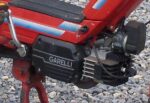


 1985-86 H1-a3 with 5 side fins
1985-86 H1-a3 with 5 side fins
piston GOL 0534 0+18.8+12+16.7=47.5
rings two 40 x 2.0 GN, pin 12 x 33
The head changed from silver to black. Plastic combs were added to reduce engine noise from vibrating fins. The starting mechanism changed from sliding-spiral type to ratchet type.
alum. cylinder 205.054.3111 20 mph
alum. cylinder 205.002.3111 25-30 mph
left cover 205013.1131 black with lines
right cover 205013.1132 black with lines
F360933-
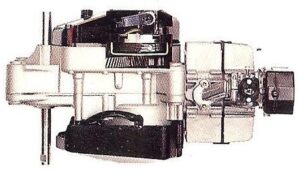

 1987-93 H1-a4 with shoe clutch
1987-93 H1-a4 with shoe clutch
piston GOL 0534 0+18.8+12+16.7=47.5
rings two 40 x 2.0 GN, pin 12 x 33
The head changed back to silver. The automatic centrifugal clutch changed from rubber ring type to shoe type.
5. 1980’s 2-speed Horizontal Cylinder
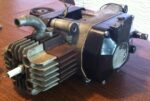

 1979-80? H2-black with 6 side fins
1979-80? H2-black with 6 side fins
piston GOL 0037 3+18.5+12+16.5=50
rings two 40 x 2.0 GN, pin 12 x 33
iron cylinder 205.003.3111 25 mph
left cover 207056.1131 black faceted
right cover 205012.1132 black faceted
H040001-H042464 = 2,464?


 1980-81? H2-a2 with 5 fin alum. cylinder
1980-81? H2-a2 with 5 fin alum. cylinder
piston GOL 0534 0+18.8+12+16.7=47.5
rings two 40 x 2.0 GN, pin 12 x 33
alum. cylinder 205.054.3111 20 mph
alum. cylinder 205.002.3111 25-30 mph
left cover 207056.1131 black faceted
right cover 205012.1132 black faceted
H042465-H044808 = 2,343
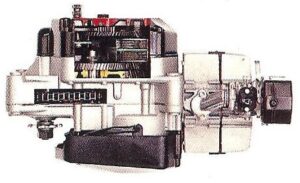

 1987-93? H2k-a4 kick start 2sp with shoe clutches
1987-93? H2k-a4 kick start 2sp with shoe clutches
piston GOL 0534 0+18.8+12+16.7=47.5
rings two 40 x 2.0 GN, pin 12 x 33
Vertical Cylinder Engines
1950’s: In the early 50’s Garelli only made Mosquito horizontal-cylinder friction-drive bicycle engines. They were sold as kits and on bikes. In the late 50’s Garelli also made Mosquito vertical-cylinder chain-drive moped engines. They were only sold on bikes.
6. 1950’s 3 or 4-speed Vertical Cylinder

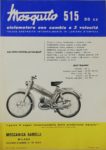
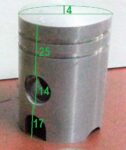
1956-60 315H 49cc 2.5hp type 3V-pedal
piston GOL 0000 4+25+14+17=60
rings two 40 x 2.5 GN, pin 14 x 32
on 56-60 Mosquito 50 Gran Turismo
on 56-58 Mosquito 515

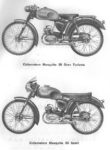

1956-61 315HS 49cc ??hp type 3V-pedal
piston GOL 0000 4+25+14+17=60
rings two 40 x 2.5 GN, pin 14 x 32
on 56-61 Mosquito 50 Sport (pedal)
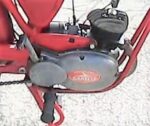


1956-60 315M2 49cc ??hp type 3V-kick
piston GOL 0000 4+25+14+17=60
rings two 40 x 2.5 GN, pin 14 x 32
on 56-60 Mosquito 50 Sport (kick)
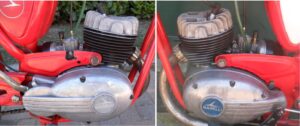
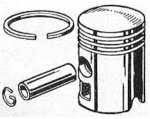
1958-61 319 70cc 3.3hp type 3V-kick
on 58-61 Motoleggera 70 Turismo (Garelli 70)
piston
rings three 45 x 2.0? GN?, pin 12 x 37?
carb: Dellorto ME16 BS or UA16 BS .
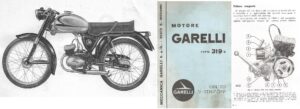

1958-61 319E 70cc 4.0hp type 3V-kick
on 58-61 Motoleggera 70 Super (Extra)
1958 Garelli 70 Parts Catalog PDF, in Italian from restori.it


1958-60 319RB 70cc 3.5hp type 4V-kick
on 56-60 Capri 70 scooter
1960’s: In ’60-69 engine models had encoded digits:
Digit 1 is always 3.
Digit 2 tells the engine size 4 or 5 is 50 cc, 7 is 100 cc.
Digit 3 tells the speeds 1, 3, or 4 or 7 for 2-speed automatic.
Digit 4+ tells the type, pedal P or kick K.
Digit 4+ R means fan cooled for scooter or 3-wheel truck.
7. 1960’s 1-speed Vertical Cylinder
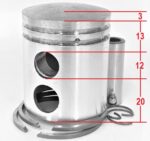
1960-64 341P 49cc 1.5hp type 1A-pedal
piston GOL 0038 3+13+12+20=48
rings two 40 x 2.0 GN, pin 12 x 33
on ’60-65 Mosquito M Matic .
on ’62 Garelli Tze-Tze (M Matic)
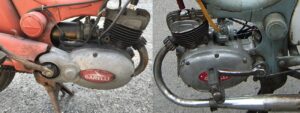

 1966-71 351P 49cc 2.2hp type 1A-pedal
1966-71 351P 49cc 2.2hp type 1A-pedal
piston GOL 0038 3+13+12+20=48
rings two 40 x 2.0 GN, pin 12 x 33
carb: center-mount Dellorto SHA 14/12
on ’66-71 Garelli M
on ’69-70 Broncco Colt 2.5hp (US)
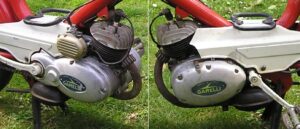

1967-70 351nP 49cc 1.5hp type 1A-pedal
piston GOL 0038 3+13+12+20=48
rings two 40 x 2.0 GN, pin 12 x 33
carb: side-mount Dellorto SHA 14/9?
on 67-70 Garelli Gulp, Gulp Flex
on 77-78 Garelli M (UK)
8. 1960’s 2-speed Vertical Cylinder

1960-63 357P? 49cc 1.4hp type 2A-pedal
piston GOL 0038 3+13+12+20=48
rings two 40 x 2.0 GN, pin 12 x 33
carb: center-mount Dellorto SHA 14/9?
on 60-63 Mosquito M2


1963-70 357cP 49cc 2.2hp type 2A-pedal
piston GOL 0038 3+13+12+20=48
rings two 40 x 2.0 GN, pin 12 x 33
carb: center-mount Dellorto SHA 14/12 .
on 63-65 Garelli Automatic .
on 65-68 Garelli Bimatic (UK) .
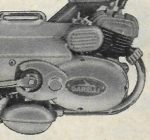

1969-70 357fP 49cc 1.4hp type 2A-pedal
piston GOL 0037 3+18.5+12+16.5=50
rings two 40 x 2.0 GN, pin 12 x 33
carb: side-mount Dellorto SHA 14/9?
on 69-70 Garelli Gulp Matic
1969-70? 357gP 49cc 2.2?hp type 2A-pedal
piston GOL 0037 3+18.5+12+16.5=50
rings two 40 x 2.0 GN, pin 12 x 33
carb: side-mount Dellorto SHA 14/12?
9. 1960’s 3-speed Vertical Cylinder
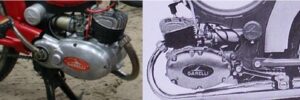
1961-78 353P 49cc 1.5hp type 3V-pedal
on 63-69 Garelli M3
on 68-70 Garelli Gulp 3V
on 77-78 Garelli M3 (UK)
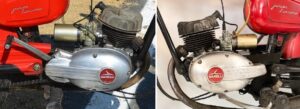
1961-69 353K 49cc 1.5hp type 3V-kick
on 61-69 Garelli Junior Turismo

1961-62 353bEKY 49cc 2.5hp type 3V-kick
on Garelli Junior standard
1961-62 353cEKY 49cc 2.5hp type 3V-kick
on Garelli Junior extra
same as 353bEKY except for two rear sprockets
1960-62 353cERKY 49cc 2.5hp type 3V-kick
on 60-62 Capri 50-S scooter
same as 353cEKY except for fan cooling
1967-67 353ERKY 49cc 2.0hp type 3V-kick
on 67-67 Capri 50 scooter
same as 353EKY except for fan cooling
10. 1960’s 4-speed Vertical Cylinder
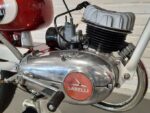
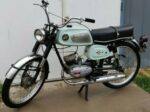

 1963-69 354K 49cc 3.8hp type 4M-kick
1963-69 354K 49cc 3.8hp type 4M-kick
piston GOL 0039 3+13+12+20=48
rings two 40 x 2.0 GN, pin 12 x 33
on 62-65 Garelli Junior Sport
on 62-65 Rex KL75 (US)
1964-68 354KR 49cc 3.8hp type 4M-kick-fan
piston GOL 0039 3+13+12+20=48
rings two 40 x 2.0 GN, pin 12 x 33
on 64-68 Capri 50 scooter
on 68-69? Garelli 50 3-wheel utility truck
same as 354K except for fan cooling
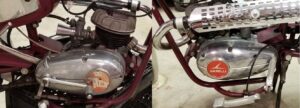

 1960-68 354KZ 49cc 5.0hp type 4M-kick
1960-68 354KZ 49cc 5.0hp type 4M-kick
piston GOL 0039 3+13+12+20=48
rings two 40 x 2.0 GN, pin 12 x 33
on 62-66 Garelli Junior Sport
on 60-65 Garelli Sport 50
on 65-65 Garelli Jr 50 Fan Trail (US)
on 67-68 Garelli Mini Bat .
on 68-68 Broncco TC-4 (US)

1961-68 354RZKY 49cc 4.3hp type 4V-kick
piston GOL 0039 3+13+12+20=48
rings two 40 x 2.0 GN, pin 12 x 33
on 61-68 Capri 50 scooter
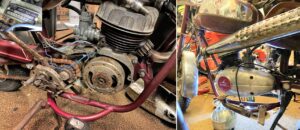

 1968-69 354mBZKW 49cc 5.0hp type 4M-kick
1968-69 354mBZKW 49cc 5.0hp type 4M-kick
piston GOL 0039 3+13+12+20=48
rings two 40 x 2.0 GN, pin 12 x 33
iron cylinder
on 69-69 Garelli Mini Bat
on 68-69 Broncco TC-4, TS-4 (US)

 1967-70 354nBZKW 49cc 6.2hp type 4M-kick
1967-70 354nBZKW 49cc 6.2hp type 4M-kick
aluminum cylinder
on 67-69 Garelli Rekord
on 67-69 Garelli Cross
on 67-69 Garelli Monza Special
on 67-69 Rex KL75 Gadabout (US)
on 67-69 Garelli 50 Sport (UK)
on 69-70 Garelli Mini Bat
on 69-70 Broncco TC-4, TS-4 (US)


1961-64 374bEKW 94cc 6.0hp type 4M
on 61-64 Garelli 98 (export)


1962-63? 374cRKY 94cc 5.2hp type 4V-kick-fan
on 62-63? Capri Monaco scooter
1963-64? 374gRKY 94cc 5.5hp type 4V-kick-fan
on 63-64? Capri Monaco scooter


 1964-65? 374hRKY 94cc 7hp type 4M-kick
1964-65? 374hRKY 94cc 7hp type 4M-kick
on 64? Capri Monaco scooter
on 65 Rex Monaco scooter (US)
The one shown is foot shift, but the ID says hand shift (Y),
so foot shift must have been an option.
1970’s: Most of the 1960’s engines with rounded engine cases and cylinder fins were discontinued in 1970-71. The cases and fins became more square. Horizontal lines were added to the side covers. Because of that you can tell a 70’s Garelli from a 60’s one by a photo or from 100 feet away.
Engine Models: In 1970 Garelli stopped using engine model numbers. Instead they spelled out the engine models, like “vertical cylinder two speed automatic”.
11. 1970’s 1 or 2-speed Vertical Cylinder

1971-78 G1 49cc 1.5hp type 1A-pedal
piston GOL 0037 3+18.5+12+16.5=50
rings two 40 x 2.0 GN, pin 12 x 33
iron cylinder, Dellorto SHA 14/12L carb
on 71-78 Garelli M
on 71-77 Garelli Gulp Flex
on 71?72 Concord Flex (UK)
on 73?77 Concord Matic (UK)
on 71-80 Garelli Bonanza
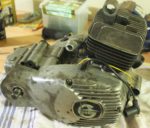

 1970-78 G2 49cc 1.5hp type 2A-pedal .
1970-78 G2 49cc 1.5hp type 2A-pedal .
piston GOL 0037 3+18.5+12+16.5=50
rings two 40 x 2.0 GN, pin 12 x 33
iron cylinder, side mount SHA 14/12L carb
on 71-77 Garelli Gulp Matic
on 76-78 Garelli Gulp Matic (US)
on 71?72 Concorde Bimatic (UK)
1970-77 G2K 49cc 1.9hp type 2A-kick .
piston GOL 0037 3+18.5+12+16.5=50
rings two 40 x 2.0 GN, pin 12 x 33
iron cylinder, side mount SHA 14/12L carb
on 71-72 Garelli Bonanza 40 (DE)
1970 Gulp Service Manual PDF in Italian, from rpw.it
12. 1970’s 3-speed Vertical Cylinder

1971-77 G3m 49cc 1.5hp type 3V-pedal
piston GOL 0037 3+18.5+12+16.5=50
rings two 40 x 2.0 GN, pin 12 x 33
iron cylinder, Dellorto SHA 14/12L carb
on 70-76 Garelli Gulp 3M
on 70?72 Concorde 3V (UK)
1970-77 G3mk 49cc 5.0hp type 3V-kick
piston GOL 0037 3+18.5+12+16.5=50
rings two 40 x 2.0 GN, pin 12 x 33
iron cylinder, Dellorto carb
on 70-72 Garelli Junior (Gran) Turismo
on 70-71 Garelli Junior Rekord
on 70-70 Garelli Junior Cross
on 70-70 Garelli Mini Bike
13. 1970’s 4 or 5-speed Vertical Cylinder
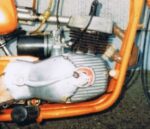

 1970-77 G4mk 49cc 2.0hp type 4M-kick
1970-77 G4mk 49cc 2.0hp type 4M-kick
piston GOL 0037 3+18.5+12+16.5=50
rings two 40 x 2.0 GN, pin 12 x 33
iron cylinder, Dellorto SHA 14/12L carb
on 72-72 Garelli Bonanza
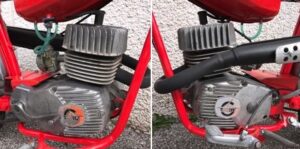

 1970-77 G4akr 49cc 2.0hp type 4M-kick
1970-77 G4akr 49cc 2.0hp type 4M-kick
piston GOL 0040 2+22.8+12+15.7=52.5
rings 40L x 2.0, 40 x 1.5 GN, pin 12 x 33
aluminum cylinder, Dell0rto 14/12L carb
on 70-71 Garelli BC-4 Mini (Bat) Cross
on 70-71 Garelli BC-4L Mini (Bat) Cross Lusso
on 70-71 Broncco BC-4
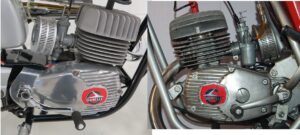

1970-77 G4ak 49cc 6.2hp type 4M-kick
piston GOL 0040 2+22.8+12+15.7=52.5
rings 40L x 2.0, 40 x 1.5 GN, pin 12 x 33
angled head fins, Dellorto UB 20S carb, 90 jet
on 70-71 Garelli Rekord
on 70-71 Garelli Tiger Cross
on 70-71 Garelli Rekord (UK)
on 70-71 Garelli Tiger Cross (UK)
1971-73 G4ak2 49cc 6.2hp type 4M-kick
piston GOL 0040 2+22.8+12+15.7=52.5
rings 40L x 2.0, 40 x 1.5 GN, pin 12 x 33
radial head fins, Dellorto UB 20S carb, 90 jet
on 71-73 Garelli Rekord Mk I
on 71-73 Garelli Tiger Cross Mk I
on 70-73 Garelli KL50 4V


1973-77 G5ak 49cc 6.2hp type 5M-kick
piston GOL 0040 2+22.8+12+15.7=52.5
rings 40L x 2.0, 40 x 1.5 GN, pin 12 x 33
radial head fins, Dellorto UB 20S carb, 90 jet
on 73-77 Garelli Rekord Mk II
on 73-77 Garelli Tiger Cross Mk II
on 73-77 Garelli KL50 5V
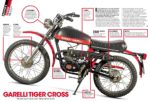
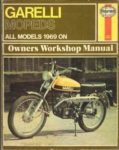

1972-73 G4akp 49cc 6.2hp 4M-kick-pedal
piston GOL 0040 2+22.8+12+15.7=52.5
rings 40L x 2.0, 40 x 1.5 GN, pin 12 x 33
on 72-73 Garelli Rekord Mk I (UK)
on 72-73 Garelli Tiger Cross Mk I (UK)
1973-75 G5akp 49cc 6.2hp 5M-kick-pedal
piston GOL 0040 2+22.8+12+15.7=52.5
rings 40L x 2.0, 40 x 1.5 GN, pin 12 x 33
on 73-75 Garelli Rekord Mk II (UK)
on 73-75 Garelli Tiger Cross Mk II (UK)
In Jan 1972 the UK “sixteener law” required 16-year-olds to drive only “mopeds”. The new definition of “moped” was 50cc with pedals, unlimited in power and speed. By late-1972 or early-1973, makers like Garelli added pedals to their 50cc motorcycles.
The book “Funky Mopeds” by Richard Skelton covers these bikes and this period. The UK-model specs and year ranges listed here are from there.
(looks the same as G5ak2)
1973-75 G58k 79cc 9.5hp 5M-kick
bore x stroke 48 x 44, instead of 40 x 39
al cyl, Dellorto SHB 19/19B carb, 120 jet
on 73-75 Garelli Record 80
on 73-75 Garelli Cross 80
on 73-75 Garelli Record 80 (UK)
on 73-75 Garelli Cross 80 (UK)
on 73?79 Garelli KL100E
1980’s: In 1978 all vertical cylinder engines changed from type G (Gulp) to type V (VIP). The differences are subtle. The biggest visible difference is the side covers. G type has horizontal lines on top front and bottom front. V type has horizontal lines only on bottom front. G type has a flattened 8-sided sticker in the middle. V type says GARELLI in raised letters. There are internal differences. The transfer ports and base gasket are different. The front lower engine mount was eliminated or unused.

Left is a G2 engine, right is V2.
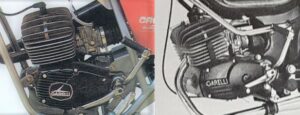
Left is a G5ak engine, right is M5ak.
14. 1980’s 1-speed Vertical Cylinder


1978-85 V1 49cc 1.5-2.0hp type 1A-pedal
piston GOL 0037 3+18.5+12+16.5=50
rings two 40 x 2.0 GN, pin 12 x 33
iron cylinder, side mount SHA 14/12L carb
on 78-85 Garelli VIP 1
on 78-80 Concorde Matic (UK)

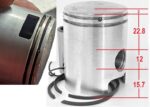
 1983-84 M1 49cc 1.5-2.0hp type 1A-pedal
1983-84 M1 49cc 1.5-2.0hp type 1A-pedal
piston with boost port 2+22.8+12+15.7=52.5
rings 40L x 2.0, 40 x 1.5 GN, pin 12 x 33
aluminum cylinder,
on 83-84 Garelli Monza GT (US)
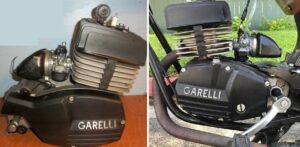
 1985-86 M1 49cc 1.5-2.0hp type 1A-pedal
1985-86 M1 49cc 1.5-2.0hp type 1A-pedal
piston and rings same as M1 .
aluminum cylinder,
on 85-86 Garelli Monza GT-S (US)
15. 1980’s 2 or 3-speed Vertical Cylinder
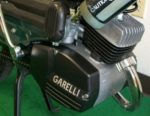
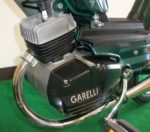

 1978-83 V2 49cc 1.5-2.0hp type 2A-pedal .
1978-83 V2 49cc 1.5-2.0hp type 2A-pedal .
piston GOL 0037 3+18.5+12+16.5=50
rings two 40 x 2.0 GN, pin 12 x 33
iron cylinder, side mount SHA 14/12L carb
on 78-80 Garelli VIP 2 Deluxe
on 78-83 Garelli VIP 2-Speed (US)
on 78-80 Concorde Bimatic (UK)
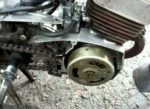

 1983-85 V2N 49cc 1.5-2.0hp type 2A-pedal .
1983-85 V2N 49cc 1.5-2.0hp type 2A-pedal .
piston GOL 0037 3+18.5+12+16.5=50
rings two 40 x 2.0 GN, pin 12 x 33
iron cylinder, center mount SHA 12/12 carb
on 84-85 Garelli VIP-N 2-speed (US)

1978-78 V3 49cc 1.5hp type 3V-pedal .
piston GOL 0037 3+18.5+12+16.5=50
rings two 40 x 2.0 GN, pin 12 x 33
iron cylinder, side mount SHA 14/12L carb
on 78-78 Garelli VIP 3
on 78-78 Garelli VIP 3 Deluxe

1978-78 V3k 49cc 1.5-2.0hp type 3V-kick .
piston GOL 0037 3+18.5+12+16.5=50
rings two 40 x 2.0 GN, pin 12 x 33
iron cylinder, side mount SHA 14/12L carb
on 78-78 Garelli VIP 3K
on 78-79 Concorde 3V (UK)
on 79-80 Garelli VIP 3V
on 79-80 Garelli VIP 3V SL Deluxe
16. 1980’s 4 or 5-speed Vertical Cylinder

1983-87 V4k 49cc 3.8?hp type 4V-kick
piston GOL 0037 3+18.5+12+16.5=50
rings two 40 x 2.0 GN, pin 12 x 33
iron cylinder, side mount SHA 14/12L carb
on 83-87 Garelli VIP 4 N
on 83-84 Garelli VIP 4 Deluxe
on 84-85 Garelli VIP 4 Super Self Mix
on 85-87 Garelli VIP 4 Supervip
on 85-87 Garelli VIP 4 Supervip Self Mix
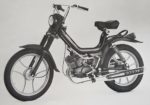
1978-81 V5ak2 49cc 6.2?hp type 5M-kick
aluminum cylinder,
on 78-81 Garelli Ciclone 5V
on 78-81 Garelli Gran Turismo
1982-87 M5ak 49cc 6.5hp type 5M-kick (was K5mk)
aluminum cylinder,
on 82-85 Garelli Ciclone 5V
on 82-82 Garelli Gran Turismo
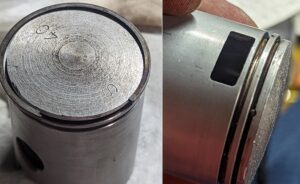
Garelli Monza piston
 US Models
US Models 
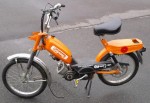
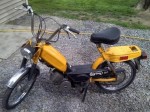


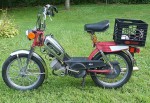


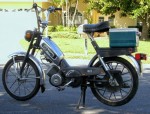
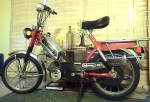

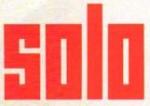


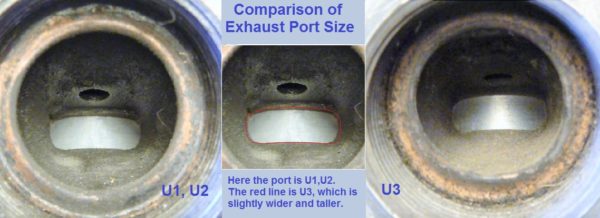
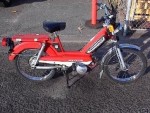
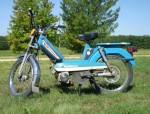

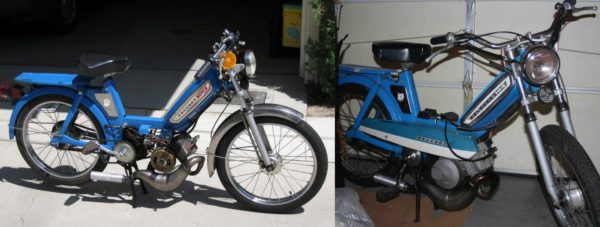
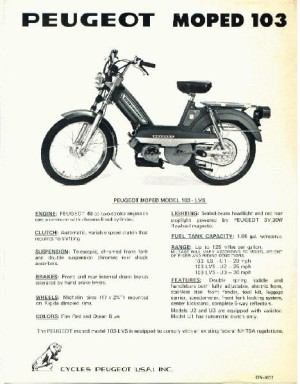
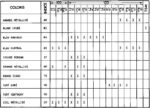
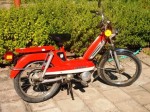
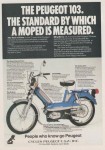
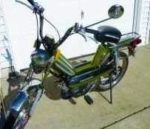
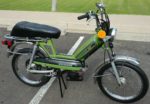
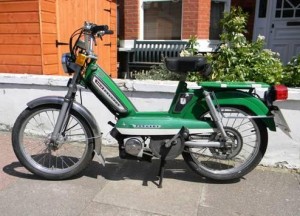
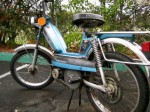
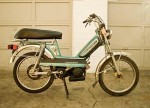
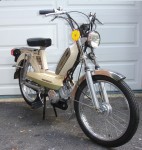
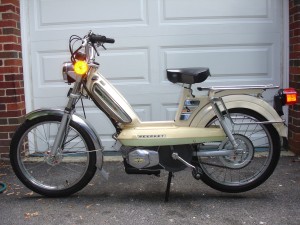

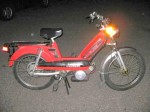
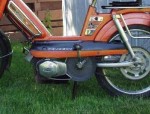
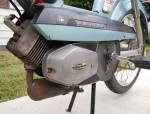
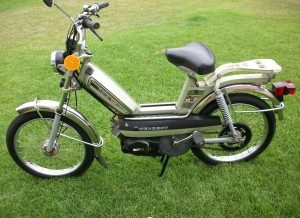
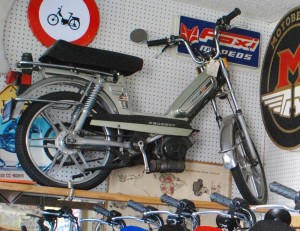


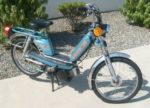
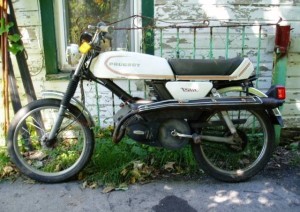
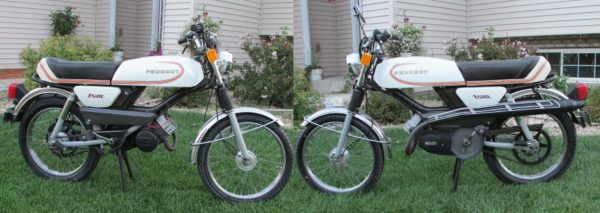
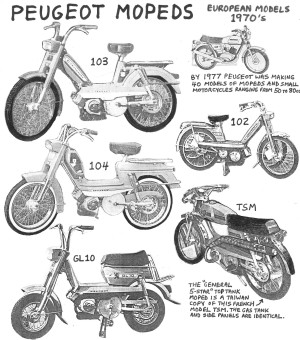
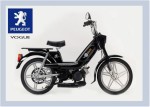
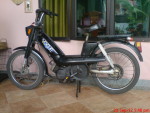
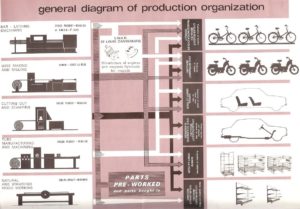
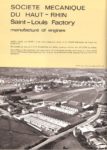
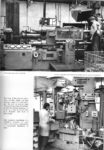
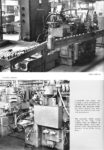
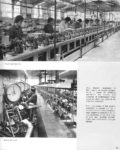
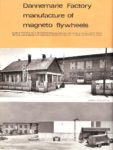


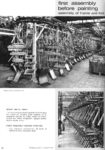
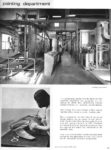

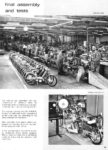
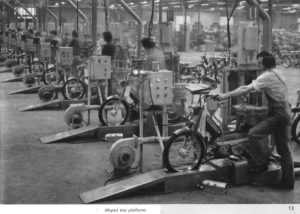
 Select:
Select: 
